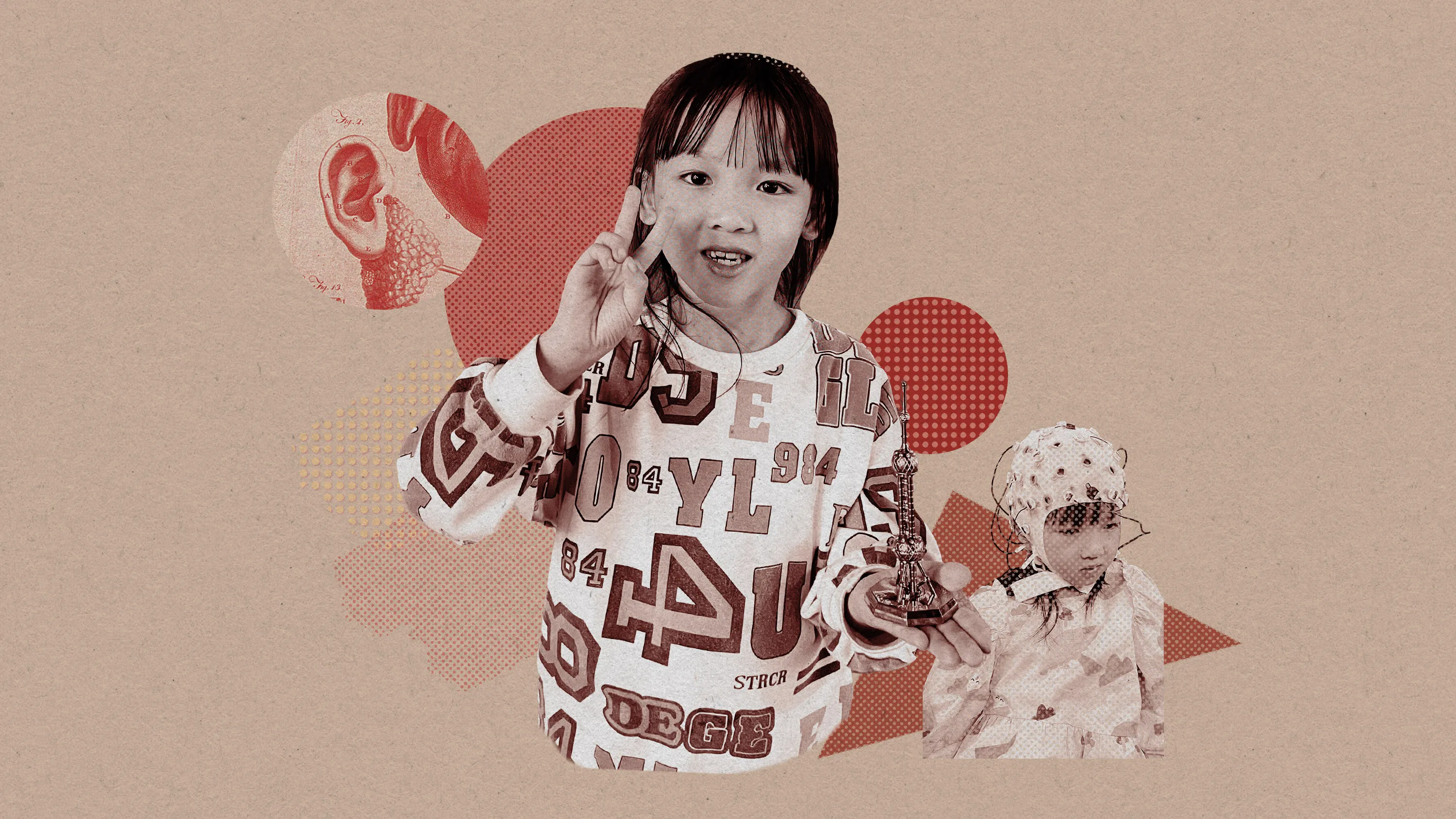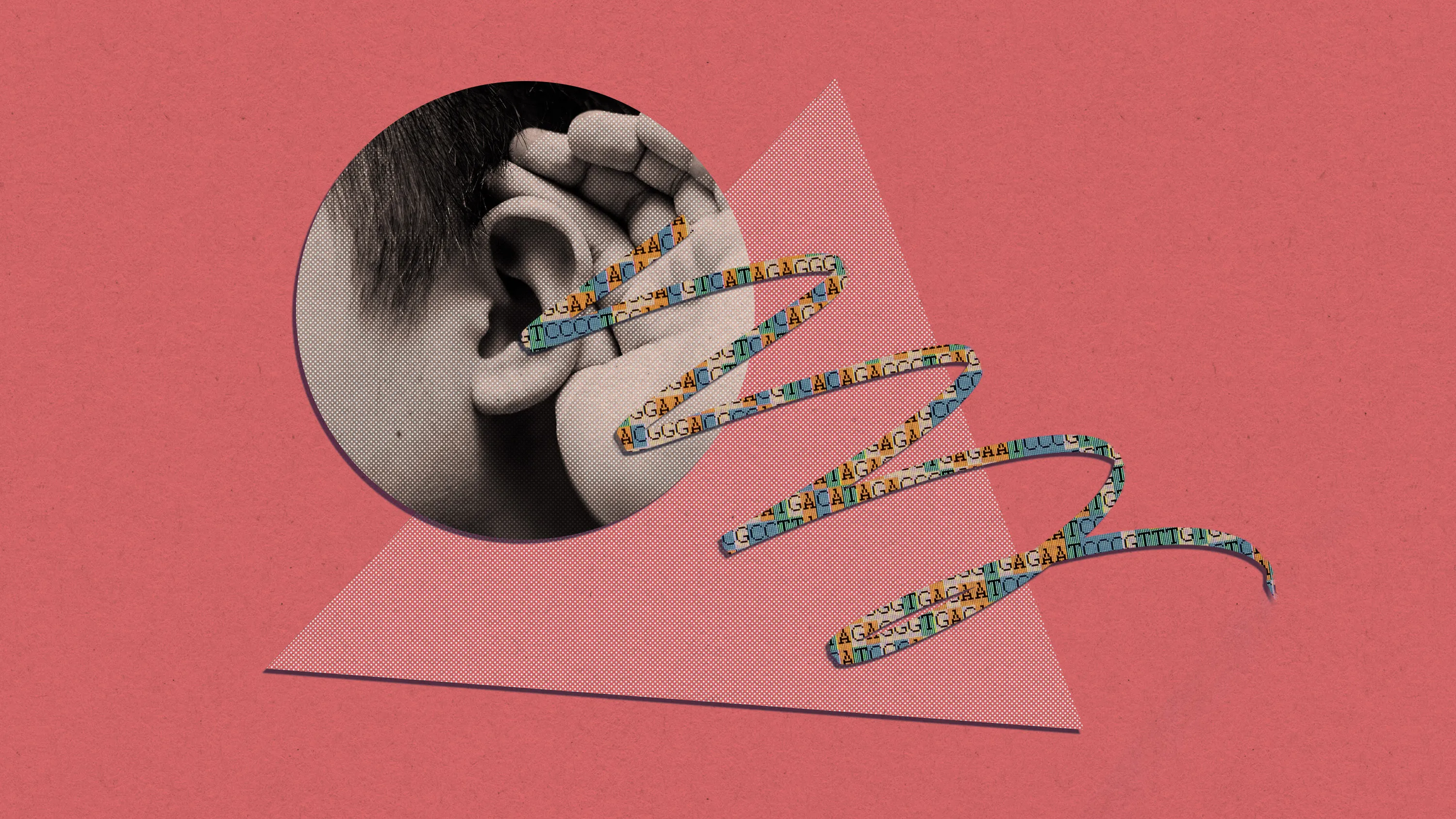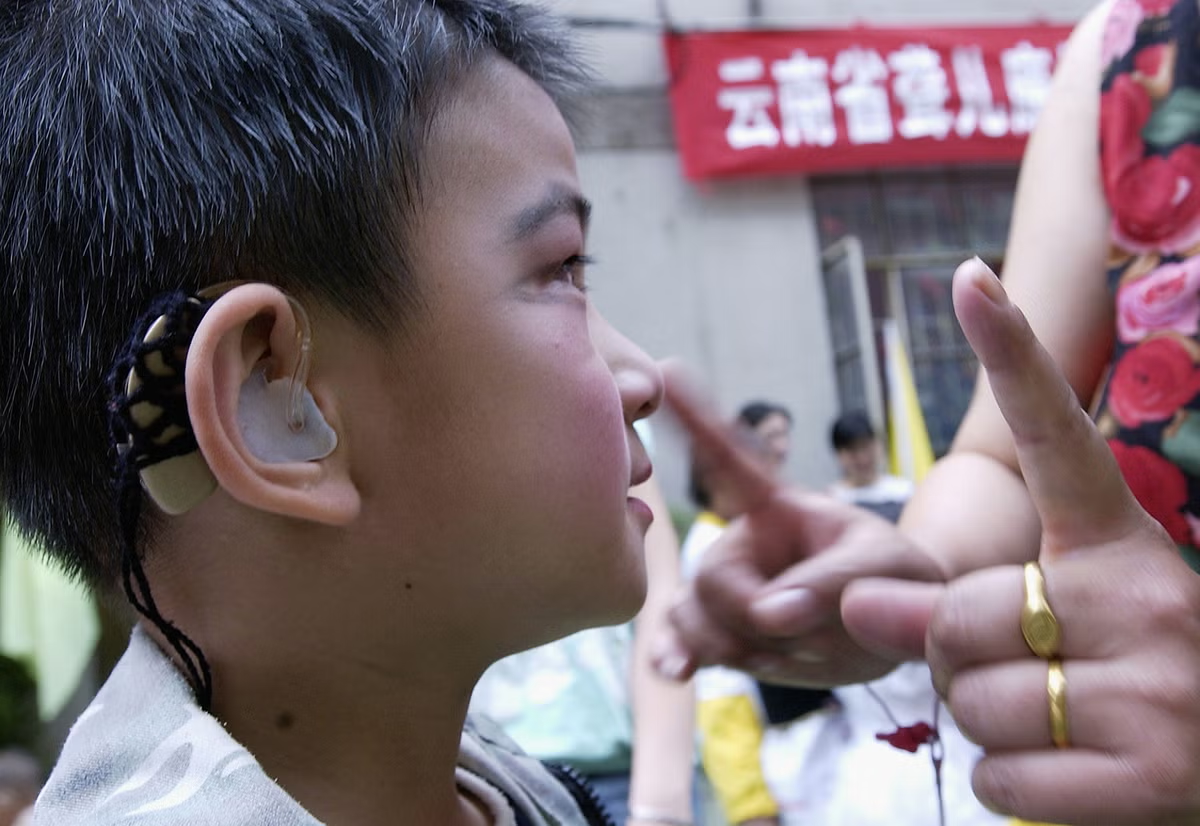Some Deaf Children In China Can Hear After Gene Treatment
Discover a Miracle: Some Deaf Children in China Can Now Hear Thanks to Groundbreaking Gene Treatment! Explore the Incredible Breakthrough That's Changing Lives and Unveiling a World of Sound.
Nov 16, 202322 Shares21714 Views
In a groundbreaking scientific triumph, hope has been restored to the lives of some deaf children in China. Some Deaf Children In China Can Hear After Gene Treatment. Thanks to cutting-edge gene treatment, these young individuals are now experiencing the gift of hearing, transforming their world in ways that were once thought impossible. Explore the extraordinary journey of these children, as science shatters boundaries and brings the joy of sound to their lives.
Witness the heartwarming stories of these remarkable children and their families, as they embark on a new chapter filled with the laughter of shared conversations, the beauty of music, and the sounds of everyday life. Join us on this remarkable journey of resilience, science, and the sheer power of human potential, as we unveil the incredible promise of gene treatment.
Understanding The Genetics Of Deafness
Deafness is a common sensory disorder that affects millions of people worldwide. It can be caused by a variety of factors, including genetics, aging, noise exposure, and certain medications. However, genetic causes are responsible for up to 60% of childhood hearing loss.
Types Of Genetic Deafness
There are two main types of genetic deafness: nonsyndromic and syndromic.
1. Nonsyndromic deafness- is the most common type of genetic deafness, accounting for about 70% of cases. It is characterized by hearing loss alone, without any other physical or developmental abnormalities.
2. Syndromic deafness -is associated with other physical or developmental abnormalities, such as vision problems, balance problems, or intellectual disability. It accounts for about 30% of cases of genetic deafness.
Modes Of Inheritance
Genetic deafness can be inherited in three main ways: autosomal dominant, autosomal recessive, and X-linked.
- Autosomal dominant deafness -means that a person only needs one copy of the mutated gene to develop hearing loss. This gene can be inherited from either parent.
- Autosomal recessive deafness- means that a person needs two copies of the mutated gene to develop hearing loss. This means that both parents must be carriers of the mutated gene, even if they do not have hearing loss themselves.
- X-linked deafness- means that the mutated gene is located on the X chromosome. Females have two X chromosomes, while males have one X chromosome and one Y chromosome. This means that males are more likely to develop X-linked deafness than females.
Genes Involved In Hearing
Over 150 genes have been linked to genetic deafness. These genes play a variety of roles in the hearing process, including:
- Development of the inner ear
- Transmission of sound vibrations
- Conversion of sound vibrations into electrical signals
- Processing of electrical signals by the brain
Genetic Testing For Deafness
Genetic testing can be used to identify the specific gene mutation that is causing a person's hearing loss. This information can be helpful for counseling and family planning.
Current Treatments For Genetic Deafness
There is no cure for genetic deafness. However, there are a number of treatments that can help people with hearing loss to communicate and participate in daily activities. These treatments include:
- Hearing aids
- Cochlear implants
- Sign language
- Speech therapy
The Gene Therapy Procedure And Its Mechanism Of Action
Here is a detailed explanation of the gene therapy procedure and its mechanism of action for treating genetic deafness:
The Gene Therapy Procedure
Gene therapy for genetic deafness involves introducing a functional copy of the defective gene into the inner ear cells responsible for hearing. This is typically done using a vector, which is a carrier that can deliver the gene to the target cells. There are two main types of vectors used in gene therapy for deafness:
- Adeno-associated viruses (AAVs)- are small, non-pathogenic viruses that are commonly used for gene therapy. AAVs are relatively easy to produce and can efficiently infect inner ear cells.
- Lentiviruses -are another type of virus that can be used for gene therapy. Lentiviruses can integrate their genetic material into the host cell's DNA, which can result in long-term expression of the therapeutic gene.
The gene therapy procedure typically involves the following steps:
- Preparation of the vector -The vector is engineered to contain the functional copy of the defective gene.
- Delivery of the vector -The vector is delivered to the inner ear cells through injection or other methods.
- Expression of the therapeutic gene - The vector delivers the therapeutic gene to the inner ear cells, where it is expressed and produces the functional protein.
- Restoration of hearing - The functional protein restores hearing function to the inner ear cells.
Mechanism Of Action
Gene therapy for deafness works by replacing the defective gene with a functional copy. This functional copy produces the protein that is necessary for normal hearing. The protein can then restore the function of the inner ear cells responsible for hearing.
The specific mechanism of action depends on the type of vector used. For AAVs, the therapeutic gene is not integrated into the host cell's DNA. Instead, it remains in the cytoplasm of the cell, where it is expressed. This means that the effect of gene therapy with AAVs is typically transient.
For lentiviruses, the therapeutic gene is integrated into the host cell's DNA. This means that the effect of gene therapy with lentiviruses is typically long-lasting.
Clinical Trial Results - Evidence Of Hearing Restoration
Clinical trials have demonstrated that gene therapy can effectively restore hearing in certain individuals with genetic deafness. These trials have involved a variety of gene therapy approaches, targeting different genetic mutations and utilizing different vector systems.
One of the most notable clinical trials was conducted by Decibel Therapeutics, which evaluated gene therapy for DFNB9, a form of deafness caused by mutations in the OTOF gene. The trial involved 29 adults with DFNB9, who received a single injection of an AAV vector carrying a functional copy of the OTOF gene. At six months after the injection, 71% of participants showed a significant improvement in hearing, with an average improvement of 25 decibels.
Another promising clinical trial was conducted by Akouos, which evaluated gene therapy for GJB2-related deafness, a form of deafness caused by mutations in the GJB2 gene. The trial involved 27 adults with GJB2-related deafness, who received a single injection of an AAV vector carrying a functional copy of the GJB2 gene. At one year after the injection, 67% of participants showed a significant improvement in hearing, with an average improvement of 19 decibels.
These clinical trials provide compelling evidence that gene therapy can be an effective treatment for certain types of genetic deafness. However, it is important to note that these trials have involved relatively small numbers of participants, and more research is needed to fully understand the long-term safety and efficacy of gene therapy for deafness.
Yiyi, A Young Girl Who Has Regained Her Hearing Through Gene Therapy
In a remarkable medical breakthrough, scientists in China have used gene therapy to restore hearing in a young girl named Yiyi. Yiyi was born deaf, but after receiving the gene therapy treatment, she is now able to hear and speak.
The gene therapy treatment involved injecting a harmless virus carrying a functional copy of the missing gene into Yiyi's ears. The missing gene is responsible for producing a protein that is essential for hearing. Once the virus was injected, it delivered the functional copy of the gene to Yiyi's cells, which then began to produce the missing protein.
As a result of the treatment, Yiyi is now able to hear sounds at a level of 30 decibels, which is considered to be normal hearing. She is also able to understand speech and communicate with others.
The success of Yiyi's treatment is a major breakthrough for gene therapy and could lead to the development of new treatments for other types of deafness. It is also a symbol of hope for the millions of people around the world who are deaf or hard of hearing.
Potential Implications For The Treatment Of Deafness
The successful development of gene therapy for deafness holds immense potential for transforming the lives of individuals affected by this condition. If proven to be safe and effective, gene therapy could offer a cure for genetic deafness, restoring the ability to hear for millions of people worldwide.
Restoring Communication And Social Integration
The ability to hear is essential for communication, learning, and social interaction. Gene therapy could significantly improve the quality of life for individuals with deafness by enabling them to fully participate in these aspects of life. Regaining hearing could enhance their ability to communicate with family, friends, and colleagues, opening up new opportunities for education, employment, and social engagement.
Expanding Treatment Options
Currently, the primary treatment options for deafness include hearing aids and cochlear implants. While these technologies can provide significant benefits, they have limitations. Hearing aids may not be suitable for all individuals, and cochlear implants are invasive procedures that are not suitable for everyone. Gene therapy offers an additional and potentially more effective treatment option, particularly for individuals with genetic deafness.
Addressing Disparities In Access
Access to hearing aids and cochlear implants can be limited due to financial constraints and limited availability of these technologies in certain regions. Gene therapy could potentially address these disparities by providing a more accessible and cost-effective treatment option.
Addressing Ethical Considerations And Future Directions
As with any new medical technology, the development of gene therapy for deafness raises important ethical considerations. It is crucial to ensure that this treatment is developed and administered in a responsible and equitable manner. This includes considerations such as informed consent, access to treatment for all individuals regardless of socioeconomic status, and ongoing monitoring of long-term safety and efficacy.
Informed Consent
Individuals considering gene therapy for deafness should have access to comprehensive and understandable information about the treatment, including its potential benefits and risks. They should also have the opportunity to discuss the treatment with their healthcare providers and make informed decisions about whether or not to proceed.
Access To Treatment
Gene therapy for deafness should be accessible to all individuals who can benefit from it, regardless of their socioeconomic status. This may require the development of financial assistance programs and other measures to ensure that cost is not a barrier to treatment.
Long-term Monitoring
The long-term safety and efficacy of gene therapy for deafness must be carefully monitored. This will require ongoing research and clinical trials to track the health of individuals who have received the treatment.
Controversies
Some people have raised concerns about the potential for gene therapy to alter the human germline, or the genetic material that is passed down from parents to their children. These concerns stem from the possibility that changes made to the germline could be passed on to future generations and have unintended consequences.
Others have expressed concern about the potential for gene therapy to exacerbate existing social inequalities. For example, if gene therapy becomes a costly treatment, it is possible that only wealthy individuals will be able to afford it. This could further widen the gap between the rich and the poor.
Future Directions
Despite these challenges, the development of gene therapy for deafness has the potential to revolutionize the treatment of this condition. Scientists are working to address the ethical concerns that have been raised, and they are also continuing to develop new and more effective gene therapy approaches. With continued research and development, gene therapy may one day provide a cure for deafness.
FAQ's About Some Deaf Children In China Can Hear After Gene Treatment
Can Infant Hearing Loss Reversed?
Sensorineural hearing loss is almost always permanent. A hearing aid or cochlear implant can help children with sensorineural hearing loss detect sound. If their hearing loss is profound or severe, the child may learn to communicate using one of these technologies along with sign language, lip reading, and gestures.
Is Genetic Deafness Curable?
About 70% of congenital forms and 25% of adult-onset forms of deafness are of genetic origin. In total, 136 deafness genes have already been identified and there are thought to be several hundred more awaiting identification. However, there is currently no cure for sensorineural deafness.
Is There A Surgery To Improve Hearing?
Cochlear Implant Ear Surgery. A cochlear implant is a surgically-implanted electronic device that helps provide sound to people with severe hearing loss. This severe type of hearing loss is usually caused by damage or a defect in the inner ear.
Conclusion
The transformation of some deaf children's lives in China through gene treatment is not just a scientific marvel; it's a testament to the unyielding human spirit and the incredible potential of medical advancements. As we look back on this incredible journey, we are reminded that the boundaries of what is possible are ever-expanding.
This extraordinary breakthrough reminds us that, even in the face of adversity, we have the ability to rewrite the narrative of our lives. As we celebrate the newfound sounds of these children's worlds, we also celebrate the boundless potential within each of us. The story of these deaf children in China stands as an inspiring beacon of possibility and hope, encouraging us all to dream big and strive for a world where every challenge can be met with innovative solutions, love, and unyielding determination.
Jump to
Understanding The Genetics Of Deafness
The Gene Therapy Procedure And Its Mechanism Of Action
Clinical Trial Results - Evidence Of Hearing Restoration
Potential Implications For The Treatment Of Deafness
Addressing Ethical Considerations And Future Directions
FAQ's About Some Deaf Children In China Can Hear After Gene Treatment
Conclusion
Latest Articles
Popular Articles

